Dragon 1/48 Ju-88A-4
The Ju-88 series is said to prove the effectiveness of the German philosophy of using one good basic airframe for a variety of missions. Actually, the Ju-88 was not the result of such a design philosophy, but rather was so good it was supremely amenable to a variety of modifications and adaptations, which resulted in it being the backbone of the Luftwaffe - used as a level bomber, a dive bomber, a long range fighter, a night interceptor, for high speed reconnaissance - all with equal success.
The aircraft resulted from a 1934 RLM specification for a heavily-armed Kampfzerstoerer - a multi-purpose airplane capable of being used as a bomber, a bomber-destroyer, or in close air support. A year later the specification was changed to a Schnellbomber, a high-speed bomber whose performance would not be compromised by making it suitable for any other roles. Maximum speed was to be 310 mph, with maximum cruising speed 280 mph, making the airplane extremely difficult to intercept by any known fighter in development at the time. Henschel and Junkers responded to the request for proposals, while the Messerschmitt proposal ultimately became the Bf-110.
The Ju-88-V1 first flew on December 21. 1936, powered by two Daimler-Benz DB-600Aa engines. The Ju-88V-1 crashed on April 10, 1937, and was replaced in testing by the similarly-powered Ju-88-V2. In light of the need for the Daimler-Benz engines, the Ju-88-V3 appeared with Junkers Jumo 210 engines.
Pilot reports of both prototypes were so enthusiastic that the RLM ordered three more prototypes. In 1938, the RLM added the requirement that the airplane be capable of precision dive bombing, which resulted in the Ju-88-V4, and finally the Ju-88-V6, which represented the first production series, the Ju-88A-1. Deliveries of the Ju-88A-0 began in the spring of 1939, followed by the Ju-88A-1 that summer.
The Ju-88's first real baptism of fire came with the Battle of Britain. On Adlertag, August 13, 1940, all three Gruppen of KG 30 and KG 51, both Gruppen of Lehrgeschwader 1, one Gruppe of KG 4, two Gruppen of KG 54 and one Gruppe of KG 1 had re-equipped with the Ju-88 and were ready for operations.
Among the highlights of the Ju-88's service in the Battle of Britain were the attack on Portsmouth by 63 Ju-88s on August 12, and an attack on August 15 by 12 Ju-88s of I/LG 1 against Middle Wallop that took the base completely by surprise, destroying several Spitfires, but losing five aircraft to defenders. Throughout the battle, the Ju-88 had the lowest loss rate to British defenders, due to its high performance. Once the aircraft had released their bombs and were heading back to France in a shallow dive, the Hurricane couldn't stay with them and the Spitfire could only make a successful interception if they had the advantage of position at the outset of the fight.
Following the Battle of Britain, Ju-88s largely replaced the Do-17s, and were employed against Malta in 1941. By the late Spring of 1941, the Ju-88A-1 had been replaced on operations by the Ju-88A-4, and the earlier aircraft was relegated to training service. By that point, the RAF considered the Ju-88 the most dangerous German aircraft in service.
The most important version was the Ju 88A-4, an improved A-model which introduced rounded wingtips at the ends of extended wings. A-5 models were earlier A-model marks brought up to the A-4 model standard complete with its changes.
The A-4 model featured a crew of four made up of the pilot, a bombardier who doubled as the nose gunner, a radio operator also serving as the rear gunner, and a navigator doubling as the ventral gunner. Power was 2 Junkers Jumo 211J engines of 1350 horsepower. Maximum speed was 317 miles per hour with a range of 1,430 miles and a service ceiling of 29,500 feet. The Ju-88A-4 and upgraded A-5 series was the primary German medium bomber of the middle years of the war.
The Ju-88 had originally been required to be capable of the same dive-bombing performance as the Ju-87, though tests revealed such dives placed undue stress on the airframe. When the Ju-88A-4 appeared, it was required to be capable of 45-degree dives rather than 70-degrees. Even with this reduced capability, the Ju-88A-4 became the primary German ship-killer in the Mediterranean.
The Ju-88A-4 participated in the great convoy battles such as Operation Pedestal. On the Eastern Front, it became the main German bomber due to its performance that allowed it to attack behind enemy lines without fighter escort.
The Dragon Ju-88 series kits first showed up around 1990, and quickly acquired a reputation for being "fiddly," since they were the first "modular" kits that allowed a basic airframe to be produced as several different variants.
As with all modular kits, test fitting is crucial. It is possible to turn these kits into well-fitting models if you test-fit and modify as necessary before gluing. That said, you will still need seam filler. These dragon kits should be considered "advanced" limited-run kits and treated as such. If you do, your frustration level will be drastically reduced and the end result will be a lot closer to what was originally planned.
This kit was built in 2004, then went into ten years' storage in 2005. Somewhere along the line, the right tailwheel door disappeared. If I could find one, the model would be perfect.
Aeromaster decals were used to create a Ju-88A-4 of KG 51 as seen on the Eastern Front in 1942.
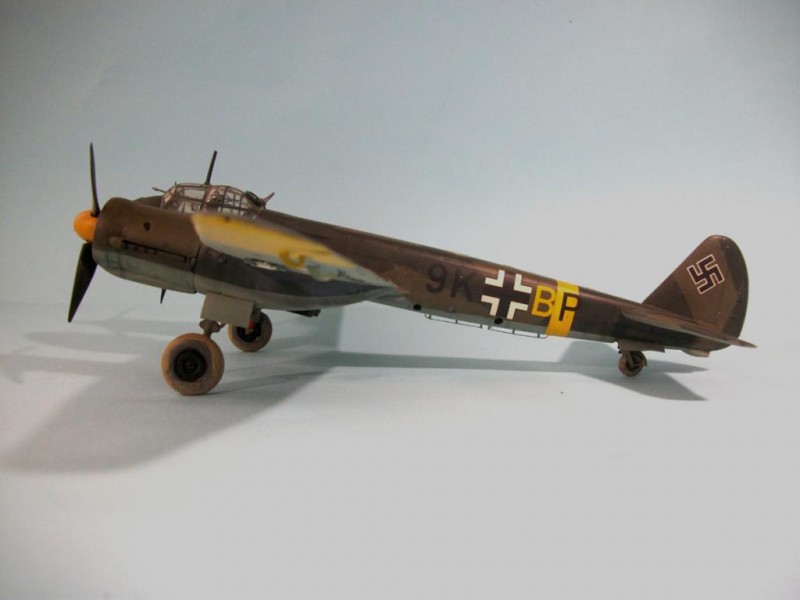
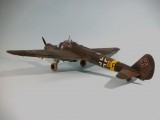
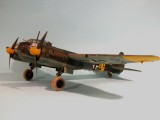
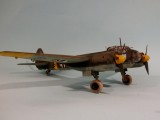
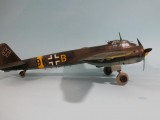
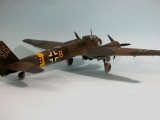
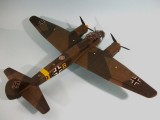
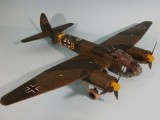
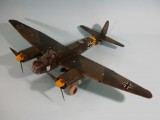
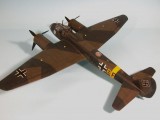
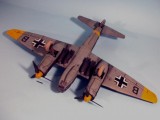
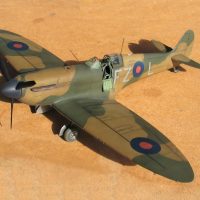
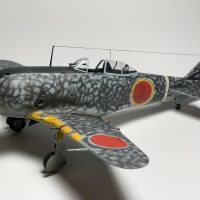
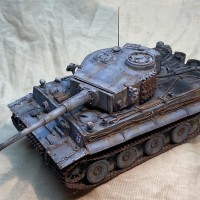

Great looking Ju-88. I like the weathering / mud on the wheels. Awesome!
Well done Tom, looks great.
Hey Tom, another great model, have you got a production line running in your Hobby Room? Nice one.
Actually, most of what I've put up over the past month or so are models coming out of storage, rediscovred during the move..
Nice work Tom, very attractive looking model.
Another nice one Tom. I'd love to see the detail a bit more clearly - perhaps just a tad better lighting and use an image editor to lighten up the pics a little.
Surprisingly, now that I have a new monitor and a new eye thanks to my bureaucrat-run government health care, I find that nearly everything I posted over the past few years was way overexposed and much too bright. These pix are correctly exposed, so you might want to check the brightness on your monitor.
Tom, this is an old matter, but my 2¢ worth is that they are too dark as rendered by this web site. The only concern I have with iModeler.com is that the photos are often too dark to show the quality work the posting modeler has done - whether this is a different issue than simply unskilled photography is not for me to say. On some other sites, the mastermind(s) either corrects for these problems, whether modeler or site caused, or asks the submitting modeler to improve the photos.
In your photos, if the background is a white sheet, there is no true white point, even in the lightest areas. Only 10 of 11 comes close. I can download this photo, open it with Mac Preview, and use the auto levels and sliders to adjust for a true white between the starboard wing and fuselage. Doing so needs substantial changes in the settings and really makes your Ju-88 pop on the page. Resetting my monitor to achieve the same end makes all pages' backgrounds on this site and others blindingly bright.